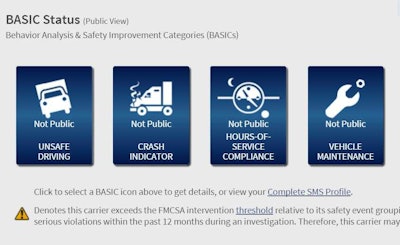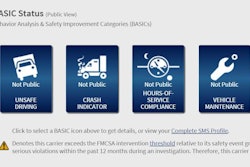
SFD, one of the three cornerstones of CSA’s Safety Measurement System when it was first conceived, was slated for publication in 2012, but has been delayed repeatedly. Now that FMCSA finally published its Carrier Safety Fitness Determination Notice of Proposed Rulemaking last month, the question remains: Is CSA data accurate enough to assign a carrier a safety rating?
When CSA went live, it was widely understood that it was still a work in progress. Indeed, CSA has been tweaked and revised numerous times in the last five years as FMCSA seeks to improve on the validity of the data it uses to issue carriers scores in each of the seven Behavior Analysis and Safety Improvement Categories. To the agency’s credit, it has listened in earnest to industry groups to improve CSA, and it should be applauded for doing so.
But CSA methodology is still under intense scrutiny from trucking industry groups and even Congress, who included language in the most recent highway bill that prohibits FMCSA from using “alerts and the relative percentile for each BASIC developed under the CSA program” from being used to assign a carrier a safety fitness rating, basically stripping CSA of its teeth.
FMCSA now must commission a study on the CSA program by June 2017 and implement any improvements and changes before returning SMS data to public view.
With its SFD Notice of Proposed Rulemaking last month, FMCSA is moving ahead with a proposed rule to assign safety fitness ratings based largely on CSA SMS data. Under the proposed rule, gone is the three-tier “Satisfactory,” Conditional” and “Unsatisfactory” rating system. The agency has misgivings that a “Satisfactory” assignment given to a carrier is a defacto stamp of approval of its operation. Instead, SFD would only be used to assign an “Unfit” designation assigned to carriers that fall under one of the three methodologies:
- Unfit Method 1: Carrier with Two or More Failed BASICs from On-Road Safety Performance
- Unfit Method 2: Carrier with Violations of the Revised Critical and Acute Regulations Identified Through an Investigation
- Unfit Method 3: Combination of Inspection Data and Investigation Results
In its methodology, FMCSA defines a “failed BASIC” as a carrier’s BASIC measure that equals or is greater than the BASIC failure standard. Carriers must have at least 11 inspections with violations in a 24-month window before it could fail a BASIC. Of the seven BASICs, all but Drug/Alcohol and Crash Indicator will be used for on-road performance measurement.
The failed BASIC threshold for four of the five included BASICs would be determined using weighted violations divided by driver inspections. For Unsafe Driving BASIC, failure would be determined by weighted violations divided by power units.
FMCSA says the SFD rule would allow it to evaluate up to five times more carriers than it does today. Fortunately, it still has time to get CSA right before a SFD final rule would allow it to assign a single “Unfit” safety fitness rating to carriers. The agency has its work cut out to make sure the data used to formulate carrier ratings are fair for all.













